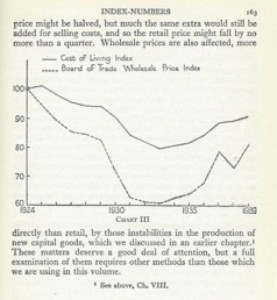There’s an interesting evaluation of Jane Jacobs in The Architectural Review, arguing that her fabulous book [amazon_link id=”067974195X” target=”_blank” ]The Death and Life of Great American Cities[/amazon_link] misses the real target in attacking ‘planners’ instead of developers, and discounting the scope for state involvement. This made conservatives fond of her, essay author Sharon Zukin argues. But it concludes warmly: “Jacobs’s challenge to maintain the authenticity of urban life still confronts the fear of difference and the hubris of modernising ambition. At a time in which local shopping streets are the target of attacks against a broader alienation, we urgently need to connect her concern with economic development and urban design to our unsettled social condition.”
[amazon_image id=”067974195X” link=”true” target=”_blank” size=”medium” ]The Death and Life of Great American Cities (Vintage)[/amazon_image]
The essay cites the famous ‘sidewalk ballet’ in the second chapter in [amazon_link id=”067974195X” target=”_blank” ]The Death and Life[/amazon_link]:
“Under the seeming disorder of the old city, wherever the old city is working successfully, is a marvelous order for maintaining the safety of the streets and the freedom of the city. It is a complex order. Its essence is intricacy of sidewalk use, bringing with it a constant succession of eyes. This order is all composed of movement and change, and although it is life, not art, we may fancifully call it the art form of the city and liken it to the dance — not to a simple-minded precision dance with everyone kicking up at the same time, twirling in unison and bowing off en masse, but to an intricate ballet in which the individual dancers and ensembles all have distinctive parts which miraculously reinforce each other and compose an orderly whole. The ballet of the good city sidewalk never repeats itself from place to place, and in any once place is always replete with new improvisations.”
Echoes of course of that other grassroots philosopher Adam Smith. Not only: “It is not from the benevolence of the butcher, the brewer, or the baker, that we expect our dinner, but from their regard to their own interest,” from [amazon_link id=”1505577128″ target=”_blank” ]The Wealth of Nations[/amazon_link], but also this from [amazon_link id=”0559612168″ target=”_blank” ]The Theory of Moral Sentiments[/amazon_link]:
“The man of system…is apt to be very wise in his own conceit; and is often so enamoured with the supposed beauty of his own ideal plan of government, that he cannot suffer the smallest deviation from any part of it… He seems to imagine that he can arrange the different members of a great society with as much ease as the hand arranges the different pieces upon a chess-board. He does not consider that in the great chess-board of human society, every single piece has a principle of motion of its own, altogether different from that which the legislature might choose to impress upon it.”
[amazon_image id=”0143105922″ link=”true” target=”_blank” size=”medium” ]The Theory of Moral Sentiments (Penguin Classics)[/amazon_image] [amazon_image id=”B00JVST6CA” link=”true” target=”_blank” size=”medium” ]The Wealth of Nations[/amazon_image]

